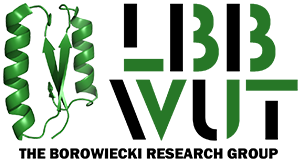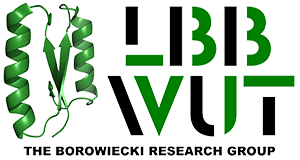PROJECTS
NCN Grants
National Science Centre (NCN) is a government agency, supervised by the Ministry of Science and Higher Education, set up in 2011 to support basic research in Poland. Basic research is defined as empirical or theoretical endeavors undertaken to gain new knowledge of the foundations of phenomena and observable facts, without any direct commercial use. NCN funds projects in Arts, Humanities and Social Sciences, Life Sciences and Physical Sciences and Engineering. The NCN has funding schemes dedicated to researchers at different stages of their career (also see: https://ncn.gov.pl/o-ncn/zadania-ncn?language=en).
Grant Name: OPUS 24
Project Title (Polish): Moc Hybrydy – Opracowanie Nowatorskich Multienzymatycznych Reakcji Kaskadowych oraz Fotobiokatalitycznych Systemów Redoks do Asymetrycznej Syntezy Optycznie Czynnych Związków o Wysokiej Wartości Dodanej („EnzCasc-Photo4BioCat„).
Project Title (English): The Power of Hybrid – Development of Novel Multienzymatic Cascade Reactions and Photo-Biocatalytic Redox Systems for Asymmetric Synthesis of Optically Active High-Added Value Compounds („EnzCasc-Photo4BioCat”).
Project No.: 2022/47/B/ST4/00139
Project Leader: Paweł Borowiecki, PhD
Principle Investigator: Paweł Borowiecki, PhD
Funding Agency: Narodowe Centrum Nauki (National Science Centre, Poland)
Funding: 1 970 910,00 PLN (ca. 447 934 EUR)
Period of Implementation: 2023–2026
WWW:

Abstract:
Nature has always been a source of constant inspiration for chemists, not only because of the enormous variety of chemical compounds that living organisms can produce but also because of the extraordinary biosynthetic strategies used to obtain them. These natural, biosynthetic strategies are based on the use of enzymes as catalysts of crucial chemical transformations, the compartmentalization of enzymes or even entire biosynthetic pathways in cellular organelles, and the sequential use of enzymes in complex metabolic pathways that allow living beings to build complex molecules from simple building blocks.
Leveraging the power of nature for sustainable chemical synthesis is of prime importance for academia and industry since utilizing enzymes as biocatalysts in chemical reactions can significantly accelerate product formation under mild reaction conditions (i.e., ambient temperature, normal pressure, neutral pH, etc.), and transform the respective organic substrates with excellent chemo-, regio-, and stereoselectivity while preserving the requirements of environmental benignity. Therefore, enzymes has become an ingenious tool for building chiral molecules in a highly efficient, straightforward, and selective fashion, which often drastically outperforms the catalytic potential of both transition-metal catalysts and organocatalysts. Incorporating enzymes into technologies can dramatically shorten the synthetic pathways, leading to less toxic waste generation and improved cost-efficiency. Moreover, recent years have seen great efforts in mimicking the metabolism of living organisms by combining several types of enzymes in a single reaction vessel to obtain complex molecules without isolating intermediates. Such artificial 'one-pot’ biocatalytic cascade reactions using hybrid biotechnological systems have opened new avenues for challenging synthetic endeavors, especially for the manufacturing of chiral drugs, in which chemical and optical purity of active pharmaceutical ingredients (APIs) are the paramount factors of therapeutic activity and safety of usage.
In turn, no life on Earth could be possible without solar light! Except for the well-known crucial functions of sunlight in such fundamental biochemical processes as photosynthesis in plants and cyanobacteria, or production of vitamin D3 and melanin in mammalian skin, or the secretion of hormones (i.e., serotonin, melatonin) in the pineal gland and brain of human beings, the solar electromagnetic radiation is also expected to play an essential role in origins of the chiral nature of basic building blocks of life, such as amino acids and carbohydrates. Inspired by these revelations, chemists have researched the streamlining of chemical processes with UV or visible light irradiation for decades. In this context, the developments of the last few years showed the enormous potential of using especially blue light as a „clean and safe” alternative energy source and a plethora of photocatalysts for their ability to facilitate a range of chemical transformations with an impressive outcome. Moreover, the phenomenon of the light-driven processes lies in a wealth of new chemical reactivities; thus, photo-chemocatalysis represents a unique synthetic toolbox for organic chemists to accomplish a host of challenging transformations not achievable with conventional chemo- and biocatalysis.
Hence, the ultimate goal of this Project’s proposal is to develop a novel, practical, eco-friendly, and ultra-efficient (in terms of products’ yield and reactions’ stereoselectivity) solar-driven biocatalytic reaction platform for deracemization of chiral compounds or valorization of waste organic molecules into high-value-added products (i.e., alcohols, amines, etc.) useful as building blocks in the pharmaceutical industry. This task will be achieved by employing various racemic compounds (i.e., sec-alcohols, carboxylic acids, etc.), alkenes, or catechols as substrates and the combination of photocatalysis and redox biotransformations, including chemoenzymatic oxyfunctionalization of C–O bonds, bio-trans-hydrogenation and/or reductive amination of C=O bonds, and enantioselective transformation of racemic alcohols. As illustrated in the graphical abstract, the elaborated one-pot photo-biocatalytic systems and multi-enzymatic cascades will comprise visible light (from purple-390 nm to red-630 nm) as the source of electromagnetic irradiation and a set of standard commercially available or newly discovered photocatalysts coupled with the library of wild-type and engineered variants of recombinant enzymes from different classes, including oxidoreductases [i.e., alcohol dehydrogenases (ADHs), catalases], transferases [i.e., transaminases (TAs), acyltransferases (MsAcTs)], oxidases (laccases, aldehyde oxidases), and hydrolases (lipases), respectively. All the biocatalysts mentioned above will be prepared in collaboration with Prof. Wolfgang Kroutil from the University of Graz. A key aspect of the research will be focused on optimizing the photo-biocatalytic conditions so that compatibility and synergy between the processes mentioned above are preserved, thus enabling the achievement of desired catalytic activity of both photo- and biocatalysts. It is expected that the designed photo-enzymatic procedures for the synthesis of optically pure compounds, due to their simplicity and high catalytic efficiency, will become an excellent alternative to the currently used synthetic methods and will be applied in the pharmaceutical industry to produce innovative drugs in the future.
Main Achievements: In progress
Publications score: In progress
Grant Name: SONATA 15
Project Title (Polish): Nowe chemoenzymatyczne strategie w asymetrycznej syntezie wybranych farmaceutyków z zastosowaniem rekombinowanych oksydoreduktaz i hydrolaz jako biokatalizatorów.
Project Title (English): Novel chemoenzymatic strategies in asymmetric synthesis of the selected pharmaceuticals using recombinant oxydoreductases and hydrolases as biocatalysts.
Project No.: 2019/35/D/ST4/01556
Project Leader: Paweł Borowiecki, PhD
Principle Investigator: Paweł Borowiecki, PhD
Funding Agency: Narodowe Centrum Nauki (National Science Centre, Poland)
Funding: 1 068 000,00 PLN (ca. 267 000 EUR)
Period of Implementation: 2020–2023
WWW: https://projekty.ncn.gov.pl/index.php?projekt_id=460431

Abstract:
Nowadays, developing of new, cost-efficient and sustainable methodologies for active pharmaceuticals ingredients (APIs) manufacturing is of prime concern not only for academia and pharmaceutical industry, but especially for high-quality drugs and ensuring patient safety. Moreover, chiral APIs are present in over 80% of drugs currently on the market, and therefore, their production in optically pure form is of paramount importance for the target-oriented therapies. Notably, especially when the pharmacological activity resides mainly in one of the stereoisomers, then enantiomeric drugs are superior to the racemates as they are characterized by an improved therapeutic index being a result of increased potency and selectivity in action as well as decreased side-effects.
Moreover, the advantages of using single-stereoisomeric APIs is that they exhibit both a faster onset of action and diminution in propensity for drug-drug interactions as well as possess the potential to provide the exposition of the patient to a lower dosage. In this context, biocatalysis offers clear advantages for innovative manufacturing processes of biologically active chiral molecules as it enables asymmetric synthesis of single enantiomers in a much simpler and efficient manner than synthetic chemical methods.
This stems mostly from the fact that in order to respond to external stimuli and regulate internal states in vivo enzymes evolved over billions of years into extremely efficient catalysts that initiates and accelerates biochemical reactions with unmatched chemo-, regio-, and stereo-selectivity. Furthermore, biocatalysis possess ability to operate under mild neutral conditions, encompass a reduced environmental footprint, and thus deliver the products at significantly lower cost level within improved safety regimes what all together place it definitely among the most relevant branches of ‘the 12 Principles of Green Chemistry’ formulated by P. Anastas and J. Warner.
Moreover, various engineering concepts including protein engineering in the context of so-called ‘Directed Enzyme Evolution’ (the Nobel Prize in Chemistry 2018 was awarded to Prof. F. H. Arnold), substrate engineering, medium engineering, biocatalyst (formulation) engineering and/or reactor engineering have consequently moved this scientific discipline from academic avant-garde to an industrially attractive technology. In addition, new strategies for increasing the level of biocatalysis’ efficiency and applicability, such as development of: (i) (chemo)multienzymatic cascades, (ii) biocatalytic multi-enzyme fusion systems, and (iii) nature-inspired enzyme-based artificial metabolic pathways consisting of complex reaction networks have opened extraordinary opportunities not only for fundamental science purposes/discoveries but also for industrial application.
Remarkably, over the last decades biocatalytic methods have emerged as an indispensable and versatile tool for the asymmetric synthesis of high-value optically pure compounds, and especially, small-molecule APIs. In this regard, excellent properties displayed by hydrolases and oxidoreducatases in terms of sophisticated selectivity and remarkable catalytic activity toward broad range of xenobiotics make them the most exploited group of biocatalysts in the synthesis of enantiomerically enriched compounds including pharmaceuticals and their intermediates.
Moreover, among those enzymes, i.e. lipases possess great ability to catalyze transformations of wide range of structurally different substrates in low-water environments and without addition of expensive cofactors. Therefore, it is not surprising that lipase-based transformations, possible to be conducted in neat organic solvents, outperforms other biocatalytic systems composed of different enzymes, and thus may still constitute a foundation for emerging technologies and strategies for chemoenzymatic synthesis of generic versions of established chiral drugs.
The major aim of this Project is to elaborate novel chemoenzymatic methodologies toward preparation of non-racemic pharmaceuticals by employing hydrolytic and/or oxidoreductive enzymes as the catalysts for the key asymmetric transformations. In this regard, the major research challenges will be aimed at development of lipase-catalyzed chromatography-free kinetic resolution (KR) approach toward racemic sec-alcohols using novel acyl donors as well as highly efficient transition-metal-free dynamic kinetic resolution (DKR) methodology designed on the basis of bi-catalytic systems composed of lipases and nano-sized heterogeneous ‘super acidic’ catalysts.
Moreover, studies on the sequential one-pot two-step oxidation-reduction deracemization of sec-alcohols catalyzed by (laccase/TEMPO)-ketoreductase will also be applied in respect to extending the reaction toolbox for asymmetric synthesis of chiral building blocks. It is worth noting that alcohol deracemization reactions will be carried out using recombinant enzymes prepared in the framework of international cooperation with scientists from the University of Graz. All the designed enzymatic methods will be optimized with regard to reaction yields and enantioselectivity as well as fully characterized in terms of stereochemical outcome. It is expected that the designed enzymatic protocols, mostly due to their simplicity and high catalytic efficiency, would become a great alternative towards currently used synthetic methods and will draw an attention of pharma industry in the future.
Main Achievements: In progress
Publications score: 12 papers published so far (please see papers n° 24, 25, 26, 27, 28, 29, 30, 31, 32, 33, 34, and 36)
Grant Name: PRELUDIUM 7
Project Title (Polish): Kataliza enzymatyczna jako wszechstronne narzędzie w syntezie pochodnych 1,3-dimetyloksantyn o potencjalnej aktywności przeciwnowotworowej.
Project Title (English): Enzymatic catalysis as a versatile tool for the synthesis of 1,3-dimethylxanthine derivatives with potential anticancer activity.
Project No.: 2014/13/N/ST5/01589
Project Leader: Paweł Borowiecki, MSc
Principle Investigator: Paweł Borowiecki, MSc
Funding Agency: Narodowe Centrum Nauki (National Science Centre, Poland)
Funding: 49 589,00 PLN (ca. 12 397 EUR)
Period of Implementation: 2015–2016
WWW: https://projekty.ncn.gov.pl/index.php?projekt_id=262673

Abstract:
Tumors constitute a group of pathologies that are characterized by uncontrolled division of cells in a life-threatening way for the organism. Among antineoplastic agents currently available on the market, there are a lot of medicinal products with a high pharmacological activity, but unfortunately also characterized by their considerable cytotoxicity toward physiologically healthy cells.
Therefore, during development of new substances with potential anticancer activity it is crucial to search for solutions that meet the requirements laid down for so-called „targeted therapies”, which assume not only the efficiency of the chemotherapeutics settings but also safety of the patients as well. Among various of molecular targets currently applied in development of new anticancer agents for tailored therapy strategies, one of the most promising is protein kinase CK2.
It is a protein enzymatic molecule, which participates in many crucial signaling pathways necessary for the proper functioning of cells. As a result of mutations in genes encoding kinase CK2, it reaches elevated activity, which in turn inactivates tumor suppressors and thus increase level of stable oncogene leading to tumor growth promotion. Over-expression of CK2 was functionally associated with different aggressive cancer types including prostate, stomach, colorectal, liver, thyroid, lung, head and neck, breast, uterus, prostate and certain leukemias.
The aim of the project is to develop a new chemoenzymatic method of the synthesis of chiral 1,3-dimethylxanthine derivatives with potential inhibitory activity against human kinase CK2. The chemical structures of proposed compounds were designed on the basis of the results obtained from molecular docking studies toward protein-ligand interactions using AutoDock 4.2 software.
Initial results obtained with this procedure allowed us to estimate the potential inhibitors strength by an appropriate analysis of binding free energy between designed ligand molecules and active site of catalytic α subunit of human kinase CK2. In the course of this preliminary studies, we have determined lead structure, which surprisingly after proceeding retrosynthetic analysis turned out to be proxyphilline.
This pharmaceutical substance is commonly applied in the treatment of cardiovascular diseases and asthma. Therefore, simultaneous development of enzymatic kinetic resolution of proxyphilline enantiomers will not only constitute the first biotechnology attempt toward obtaining optically active purine derivatives useful as precursors of anticancer agents, but also as an alternative method for the preparation of both enantiomeric forms of an existing drug.
Main Achievements: Development of highly efficient enzymatic enantioselective reactions for the gram-scale preparation of proxyphilline enantiomers without using chromatography at the purification step; Designing novel chemotherapeutics based on proxyphylline scaffold exhibiting dual anti-tumor and anti-fungal activities without observed cytotoxicity against physiological cell lines
Publications score: 5 papers (please see papers n° 10, 11, 12, 15 and 19)
Grant Name: OPUS 1
Project Title (Polish): Badanie mechanizmów inhibicji kinazy kazeinowej CK2.
Project Title (English): Studies on inhibition mechanisms of casein kinase CK2.
Project No.: 2011/01/B/ST5/00849
Project Leader: Maria Bretner, Prof.
Function in the Project (Paweł Borowiecki, PhD): Investigator
Funding Agency: Narodowe Centrum Nauki (National Science Centre, Poland)
Funding: 603 400 PLN (ca. 150 850 EUR)
Period of Implementation: 2011–2015
WWW: https://projekty.ncn.gov.pl/index.php?projekt_id=151890
Main Achievements: Design and synthesis of novel TBBt derivatives with enhanced inhibitory potency toward catalytic activity of protein kinase CK2
Publications score: 1 paper out of 6 (please see paper n° 8)

Statutory Grants
Grant Name: YOUNG PW (IDUB)
Project Title (Polish): Biotechnologiczne Zastosowanie Nowego Wariantu Rekombinowanej Dehydrogenazy Alkoholowej z Lactobacillus kefir w Asymetrycznej Syntezie Optycznie Czynnych Związków o Wysokiej Wartości Dodanej.
Project Title (English): Biotechnological Application of a New Variant of Recombinant Alcohol Dehydrogenase from Lactobacillus kefir in the Asymmetric Synthesis of Optically Active Compounds with High Added Value.
Project No.: 504/04496/1020/45.010016
Project Leader: Paweł Borowiecki, PhD
Principle Investigator: Paweł Borowiecki, PhD
Source of Funding: Faculty of Chemistry, WUT
Funding: 149 983,00 PLN (ca. 32 393 EUR)
Period of Implementation: 2023–2024
Main Achievements: In progress.
Publications score: In progress.
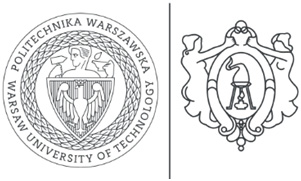
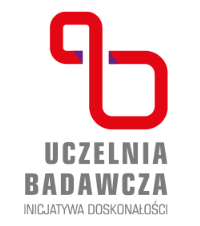
Grant Name: Dean’s Funding Program for Young Investigators 2019/20
Project Title (Polish): Chemoenzymatyczna synteza optycznie czynnych γ-arylo-γ-butyrolaktonów z użyciem komórek mikroorganizmów oraz rekombinowanych dehydrogenaz alkoholowych jako wszechstronne narzędzie w otrzymywaniu innowacyjnych neuroleptyków
Project Title (English): Chemoenzymatic synthesis of optically actively γ-arylo-γ-butyrolactones using microorganisms and recombinant alcoholic dehydrogenases as a versatile tool in the preparation of innovative neuroleptics
Project No.: 504/04361/1020/44.000000
Project Leader: Paweł Borowiecki, PhD
Principle Investigator: Paweł Borowiecki, PhD
Source of Funding: Faculty of Chemistry, WUT
Funding: 28 000,00 PLN (ca. 7 000 EUR)
Period of Implementation: 2019–2020
Main Achievements: Exploitation of various recombinant ADHs as useful biocatalysts in the stereoselective reduction of sterically-demanding bulky-bylky ketones to the corresponding optically active γ-arylo-γ-butyrolactones
Publications score: 2 paper (please see papers n° 22 and 23)

Grant Name: Dean’s Funding Program for Young Investigators 2017/18
Project Title (Polish): Poszukiwanie wydajnych biokatalizatorów do deracemizacji 1-(β-hydroksypropylo)indoli
Project Title (English): Towards highly efficient biocatalysts for deracemization of 1-(β-hydroxypropyl)indoles
Project No.: 504/03354/1020/42.000100
Project Leader: Paweł Borowiecki, PhD
Source of Funding: Faculty of Chemistry, WUT
Funding: 25 000,00 PLN (ca. 6 250 EUR)
Period of Implementation: 2017–2018
Main Achievements: First application of lipases for chiral discrimination of racemic indoles achieved under kinetically-controlled conditions
Publications score: 2 papers (please see papers n° 17 and 18)

Other Grants
Grant Name: The Innovative Economy Operational Programme 2007–2013
Project Title (Polish): Biotransformacje użyteczne w przemyśle farmaceutycznym i kosmetycznym
Project Title (English): Biotransformations for the pharmaceutical and cosmetic industry
Project No.: POIG.01.03.01-00-158/09
Project Leader: Prof. Paweł Kafarski (Wroclaw University of Technology)
Function in the Project (Paweł Borowiecki, MSc): Principal Investigator of Task XI
Source of Funding: European Regional Development Fund (Brussels, The European Regional Development Fund under The Innovative Economy Operational Programme 2007–2013)
Funding: 13 631 854,00 PLN (ca. 3 407 963 EUR); Task XI: 852 420,00 PLN (ca. 213 105 EUR)
Period of Implementation: 2010–2015
Main Achievements: Finding new applications for commercially available hydrolytic enzymes in process of kinetic resolution of wide scope of heterocyclic sec-alcohols particularly useful in pharmaceutical industry; Design strategies allowing scale-up to pre-industrial size
Publications score: 8 papers (please see papers n° 1, 2, 3, 4, 5, 6, 7 and 14)
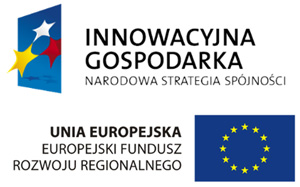
Grant Name: System Project of the Local Government of Masovia
Project Title (Polish): Rozwój nauki – rozwojem regionu – stypendia i wsparcie towarzyszące dla mazowieckich doktorantów
Project Title (English): Development of Science – the development of the region – scholarship and accompanying support for Mazovia postgraduate students
Project No.: 304/ES/ZS-III/W-POKL/14
Project Leader: Paweł Borowiecki, MSc
Principle Investigator: Paweł Borowiecki, MSc
Source of Funding: Priority VIII Regional Economy; Human Resources Action 8.2 Knowledge Transfer; Inopportune 8.2.2 Regional Innovation Strategies, Operational Program Human Capital 2007–2013, European Union Fund.
Funding: 60 000,00 PLN (ca. 15 000 EUR)
Period of Implementation: 2014–2015
Main Achievements: Designing novel chemoenzymatic strategies for the synthesis of enantiomerically pure promethazine and ethopropazine active agents; Development of 1H-NMR spectroscopic enantiodifferentiation method using (S)-(–)-BINOL as CSA toward efficient determination of enantiomeric purity of non-racemic promethazine
Publications score: 2 papers (please see papers n° 9 and 13)

